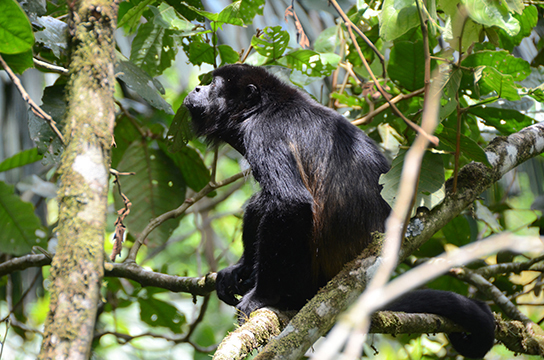| << Chapter < Page | Chapter >> Page > |
Anthropoid monkeys evolved from prosimians during the Oligocene Epoch. By 40 million years ago, evidence indicates that monkeys were present in the New World (South America) and the Old World (Africa and Asia). New World monkeys are also called Platyrrhini —a reference to their broad noses ( [link] ). Old World monkeys are called Catarrhini —a reference to their narrow noses. There is still quite a bit of uncertainty about the origins of the New World monkeys. At the time the platyrrhines arose, the continents of South American and Africa had drifted apart. Therefore, it is thought that monkeys arose in the Old World and reached the New World either by drifting on log rafts or by crossing land bridges. Due to this reproductive isolation, New World monkeys and Old World monkeys underwent separate adaptive radiations over millions of years. The New World monkeys are all arboreal, whereas Old World monkeys include arboreal and ground-dwelling species.

Apes evolved from the catarrhines in Africa midway through the Cenozoic, approximately 25 million years ago. Apes are generally larger than monkeys and they do not possess a tail. All apes are capable of moving through trees, although many species spend most their time on the ground. Apes are more intelligent than monkeys, and they have relatively larger brains proportionate to body size. The apes are divided into two groups. The lesser apes comprise the family Hylobatidae , including gibbons and siamangs. The great apes include the genera Pan (chimpanzees and bonobos) ( [link] a ), Gorilla (gorillas), Pongo (orangutans), and Homo (humans) ( [link] b ). The very arboreal gibbons are smaller than the great apes; they have low sexual dimorphism (that is, the genders are not markedly different in size); and they have relatively longer arms used for swinging through trees.

The family Hominidae of order Primates includes the hominoids : the great apes ( [link] ). Evidence from the fossil record and from a comparison of human and chimpanzee DNA suggests that humans and chimpanzees diverged from a common hominoid ancestor approximately 6 million years ago. Several species evolved from the evolutionary branch that includes humans, although our species is the only surviving member. The term hominin is used to refer to those species that evolved after this split of the primate line, thereby designating species that are more closely related to humans than to chimpanzees. Hominins were predominantly bipedal and include those groups that likely gave rise to our species—including Australopithecus , Homo habilis , and Homo erectus —and those non-ancestral groups that can be considered “cousins” of modern humans, such as Neanderthals. Determining the true lines of descent in hominins is difficult. In years past, when relatively few hominin fossils had been recovered, some scientists believed that considering them in order, from oldest to youngest, would demonstrate the course of evolution from early hominins to modern humans. In the past several years, however, many new fossils have been found, and it is clear that there was often more than one species alive at any one time and that many of the fossils found (and species named) represent hominin species that died out and are not ancestral to modern humans.

Notification Switch
Would you like to follow the 'Biology' conversation and receive update notifications?